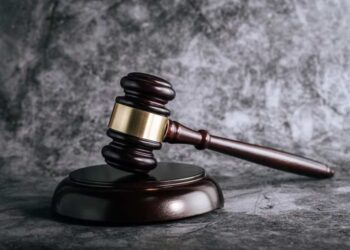California roads witnessed a disturbing surge in traffic fatalities, increasing by approximately 7.6% from 3,980 in 2020 to 4,285 in 2021. Beyond the human toll, the aftermath of a car accident often involves complex legal matters.
California’s fault-based system assigns responsibility to the driver who caused the accident, making it essential to know your rights to recover.
Understanding Fault in California Car Accidents
In California, figuring out fault is a big deal when it comes to car accidents. Unlike some states where each driver’s insurance just covers their own damages no matter who caused the crash, California needs to determine who’s responsible before you can get compensation.
To prove fault, you often need to show that the other driver was negligent. This means they didn’t drive as carefully as they should have, leading to the accident.
Here’s how to prove negligence:
- Duty of Care: First, you have to show that the other driver had a responsibility to drive safely. This is usually based on traffic laws that are there to protect everyone on the road.
- Breach of Duty: Next, you need to prove that the driver didn’t meet this responsibility. Maybe they ran a red light, were speeding, or didn’t yield the right of way. You’ll need evidence like witness statements, traffic camera footage, or reports from experts to back this up.
- Causation: You also have to show that the driver’s actions directly caused the accident and your injuries. This can be tricky, especially if other factors were involved, but it’s important to link the driver’s behavior to the crash and your injuries.
- Damages: Finally, you must prove that you suffered real damages from the accident. This includes things like medical bills, lost wages, and damage to your property.
Who Decides Fault in a California Car Accident?
Figuring out who’s at fault in a car accident in California involves several people and pieces of evidence.
First, the police officers who arrive at the scene will write an accident report. This report might include their thoughts on who caused the accident based on what they see, such as any traffic laws that were broken. While this report is important, it doesn’t decide everything about fault.
Next, insurance adjusters will get involved. They will look into the accident by reviewing the police report, talking to everyone involved, interviewing witnesses, and checking any evidence like photos or videos.
If the accident turns into a legal case, a judge or jury will decide who was at fault. They will look at all the evidence and consider things like who was being careless or breaking traffic laws. This decision is important because it affects how much money each person might get for damages.
How Does Fault Affect a Car Accident Lawsuit?
Here’s how fault impacts a car accident case:
Determining Liability
Fault is the key factor in establishing liability. In California, you need to prove who caused the accident to hold them legally responsible. This involves showing that the other driver’s actions, such as speeding or running a red light, directly led to the crash. If you cannot establish who was at fault, it becomes challenging to pursue a lawsuit successfully.
Impact on Compensation
The amount of compensation you can receive depends on fault. California uses a comparative negligence rule, which means that even if you are partially at fault, you can still recover damages. However, your compensation will be reduced by your percentage of fault. For example, if you are 20% at fault and win $10,000 in damages, you’ll receive $8,000.
Insurance Claims
Fault influences how insurance claims are handled. Insurance companies will investigate the accident, assess fault, and offer compensation based on their findings. If you’re found to be more at fault, the insurance company might offer a lower settlement or deny your claim. Proving the other driver’s fault can help ensure you receive a fair offer.
Legal Strategy
In a lawsuit, proving fault is essential for a successful outcome. Your Anaheim personal injury lawyer will gather evidence, such as police reports, witness statements, and accident photos, to build a strong case. They will also argue how the other driver’s negligence causehttps://benjipersonalinjury.com/anaheim-injury/d the accident and your injuries. The clearer the evidence of fault, the stronger your case will be.
Court Decisions
If your case goes to court, the judge or jury will use the evidence presented to determine fault and decide on compensation. They will consider how each party’s actions contributed to the accident and how this affects the damages awarded. Fault can also influence the length and complexity of the legal process.
Conclusion
How fault influences a car accident lawsuit shapes the process of determining responsibility, impacts the compensation you might receive, and affects how your case is handled by insurance companies and the courts.
By comprehending these dynamics and taking the appropriate steps, you can work towards a fair resolution. Knowing your rights and the role of fault can help you make informed decisions and improve your chances of securing the compensation you deserve.










